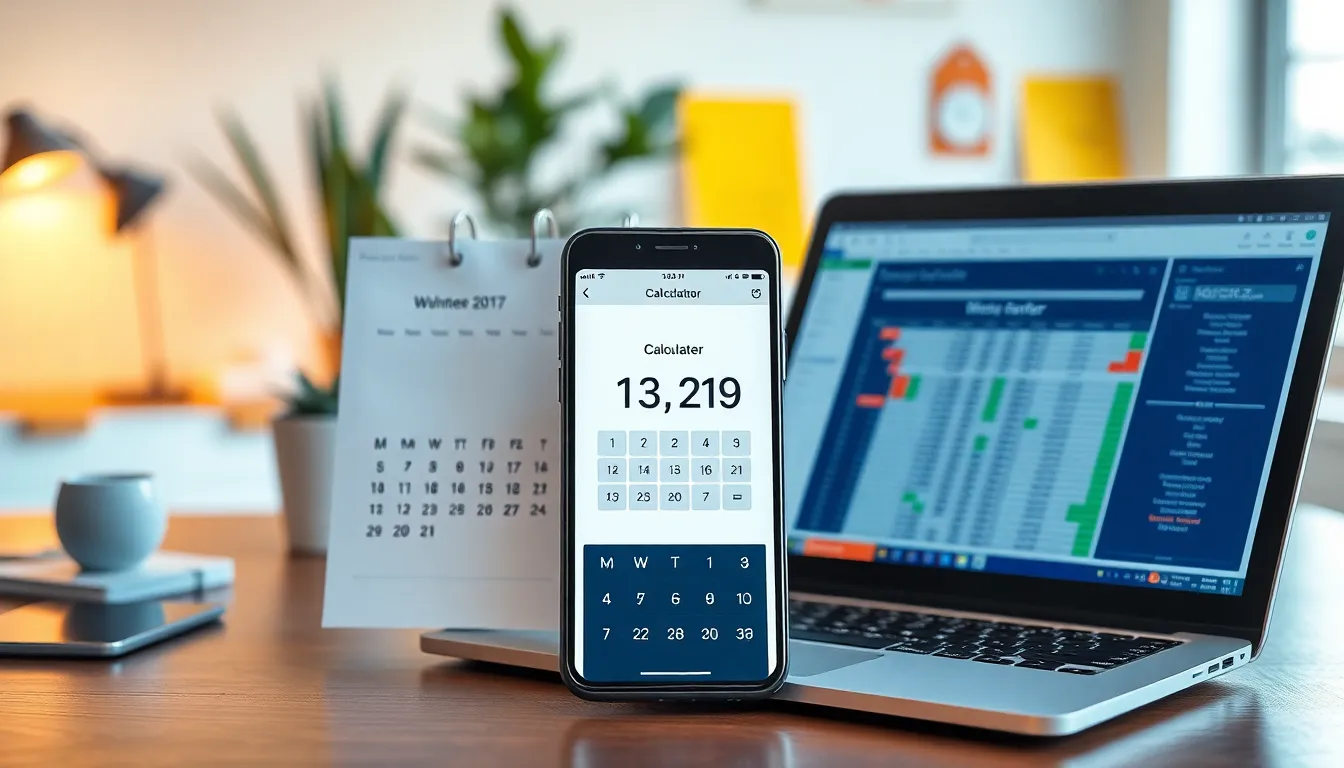In a fast-paced world, keeping track of time is essential. Whether planning a project deadline or scheduling an event, knowing what 14 days from today means can be incredibly useful. This simple calculation can help individuals and businesses alike stay organized and prepared for what lies ahead.
Understanding how to determine a date two weeks from now not only simplifies planning but also enhances productivity. With just a few moments of calculation, anyone can pinpoint that future date, ensuring they never miss an important occasion or task. In this article, readers will discover the straightforward steps to find out what 14 days from today is, along with tips to effectively manage their time.
Table of Contents
ToggleUnderstanding the Concept of Timeframes
Timeframes represent structured units of time, allowing individuals and organizations to set, meet, and manage goals effectively. Understanding timeframes aids in planning activities, setting deadlines, and organizing priorities. Measuring time is integral to planning personal events, business projects, and strategic initiatives.
Calculating a specific date, like 14 days from today, simplifies time management. This calculation transforms abstract time into concrete deadlines. By knowing the exact date, they can allocate resources, schedule tasks, and prepare for upcoming commitments.
Timeframes consist of various categories, including short-term, medium-term, and long-term. Short-term periods, like days or weeks, support immediate decisions. Medium-term spans, such as months, help in planning projects. Long-term periods, extending over years, are essential for strategic visioning.
Efficient time management enhances productivity and reduces stress. They can anticipate challenges and adjust plans accordingly. Utilizing timers, calendars, and scheduling tools further streamlines the time management process. Understanding timeframes contributes to improved responsiveness and adaptability in various situations.
Calculating 14 Days from Today

Calculating a future date, such as 14 days from today, requires a straightforward approach. This section outlines the steps and tools available for completing this task efficiently.
Step-by-Step Calculation
- Identify Today’s Date: Note the current date as the starting point. For example, if today is October 1, the process begins here.
- Add 14 Days: Calculate the date by adding 14 days to the current date. For example, October 1 plus 14 days equals October 15.
- Consider Calendar Variations: Account for any month changes. If today’s date were the 29th of a month with only 30 days, the resulting date would adjust to the next month.
- Verify Leap Years: If the date falls within a leap year, ensure February 29 is considered, if applicable.
Useful Tools for Date Calculation
| Tool | Description |
|---|---|
| Online Date Calculators | Websites like timeanddate.com offer quick calculations. |
| Calendar Apps | Applications such as Google Calendar allow users to easily add future dates. |
| Spreadsheet Software | Programs like Microsoft Excel let users create formulas for date calculations. |
| Smartphone Widgets | Many smartphones come with built-in widgets to manage dates effectively. |
Using these steps and tools, individuals and businesses can seamlessly determine important future dates, ultimately enhancing planning and time management.
Real-Life Applications of 14 Days
Calculating 14 days from today serves various practical applications in everyday life and business. This timeframe can assist in effectively planning events, meeting deadlines, and navigating legal and financial obligations.
Planning Events and Deadlines
Planning events requires precise scheduling to ensure success. By determining a date 14 days from today, individuals can set up timelines for invitations, venue bookings, and catering services. Businesses can apply this calculation to project timelines, ensuring tasks are completed on time. For instance, using a two-week lead time helps in organizing marketing campaigns, preparing product launches, or coordinating meetings. Multitasking becomes manageable, as 14 days offers a compact yet sufficient timeframe for preparation.
Importance in Legal and Financial Contexts
In legal terms, deadlines often dictate actions such as filing documents or responding to notices. Knowing that a critical date is 14 days away allows individuals to prepare necessary paperwork and avoid penalties. In financial contexts, understanding payment due dates can prevent late fees or interest charges. For instance, many invoices specify payment terms of 14 days. Monitoring these timelines ensures compliance with contractual obligations and financial health. Thus, mastering the calculation of 14 days from today plays a vital role in informed decision-making across multiple areas.
Mastering the calculation of 14 days from today can significantly enhance time management skills. By understanding how to determine future dates, individuals and businesses can effectively plan their activities and meet deadlines. This simple yet powerful tool aids in organizing priorities and ensuring that important tasks are completed on time.
Utilizing the right tools and techniques allows for better resource allocation and task scheduling. As individuals become more adept at managing their time, they’ll find that productivity increases while stress levels decrease. Embracing these practices leads to improved responsiveness and adaptability in both personal and professional settings.





